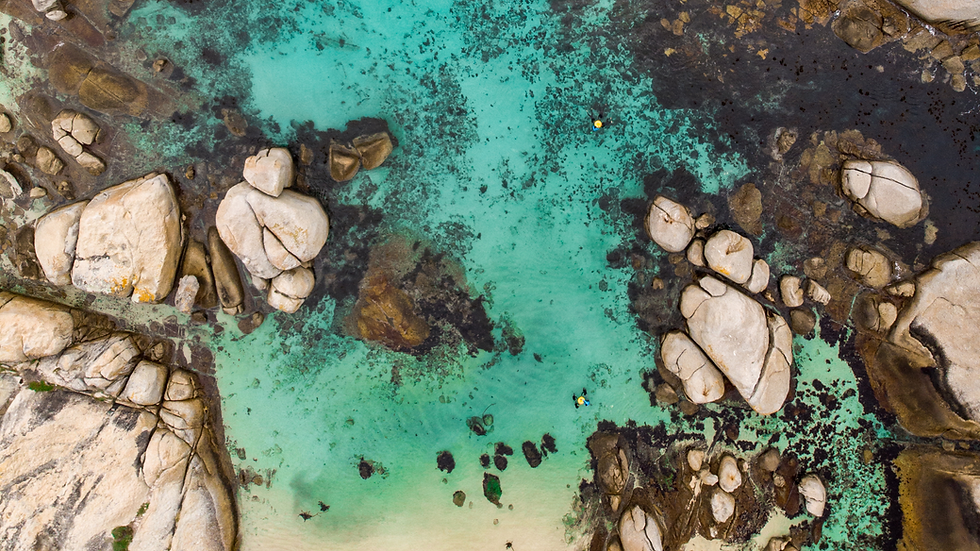Blue Bottle Stings
- IAmWaterFoundation

- Nov 2, 2023
- 2 min read
A blog by our intern, Toni Zill
What is a blue bottle?
A blue bottle as most of us know it as is actually called Portuguese man o' war (Physalia physalis), also known as the man-of-war. It can be recognised by its balloon-like float, which may be blue, violet, or pink and rises up above the waterline. Attached to the float are long strands of tentacles that grow to an average of 10 meters and may extend by as much as 30 meters. The tentacles contain stinging nematocysts, which are sting cells.

What happens when it stings you?
A Portuguese man o'war is capable of delivering an excruciating sting, however, it is rarely deadly to humans. Most people suffer immediate pain that lasts up to 20 minutes. After a sting, the tentacles leave long, stringy red welts on the skin. There is local pain, burning, swelling, and redness. You can be stung whether it is alive or dead.
What do you do once stung?
Vinegar is used to stop the venom in stingers. An object like a card or shell found along the beach can be used to scrape off the stingers. If you don't have vinegar you can just use the scraping off method. Do not use ammonia, urine, rubbing alcohol, freshwater, seawater, or ice. They all can trigger the release of more venom. If you are allergic to the sting please go to the emergency room.

Interesting facts about Blue bottles:
The Portuguese man o' war (Physalia physalis), also known as the man-of-war can be found in the Atlantic Ocean and the Indian Ocean. It is considered to be the same species as the Pacific man o' war or bluebottle, which is found mainly in the Pacific Ocean.
The Portuguese man o' war is a conspicuous member of the neuston, the community of organisms that live at the ocean surface.
Blue bottles normally occur on the surface of the ocean and can be blown to shore and into bays by strong winds. They mostly arrive in large clusters, making swimming and other watersports almost impossible.
They are not jellyfish. They are siphonophores, which means they are a colony of animals.
Their float is filled partially with carbon monoxide



Comments